The Gorge at its worst…
Authors note: Ice storms in the Columbia River Gorge are a near annual event, often closing Interstate 84 to vehicle traffic and occasionally shutting down rail traffic as well.
In December of 1998 the Boss Lady and I decided to spend Christmas on the Oregon coast. We left eastern Washington on the 23rd, arriving late that afternoon in the little town of Seaside, Oregon. We spent 4 days watching the waves and walking the beach, knowing that a large storm was forecast to hit the coast on the 28th. Storm watching is a favorite pastime for many in the Pacific Northwest.
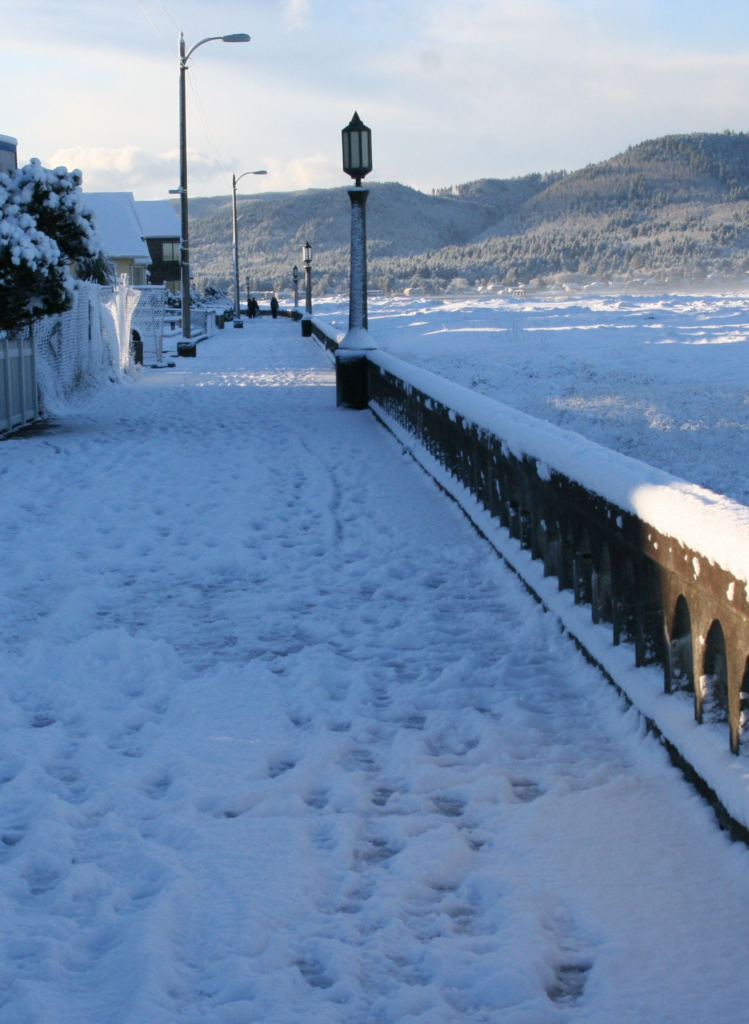
The morning of the 28th, we turned on the TV to catch a weather forecast; they were reporting a major ice storm in the Portland metropolitan area. The forecaster said that warm air aloft allowed it to rain, but at the ground level, temperatures were below freezing creating a very hazardous situation. Not wanting to be trapped in the Portland area, we decided to leave as soon as we could gather all our stuff and start the drive home.
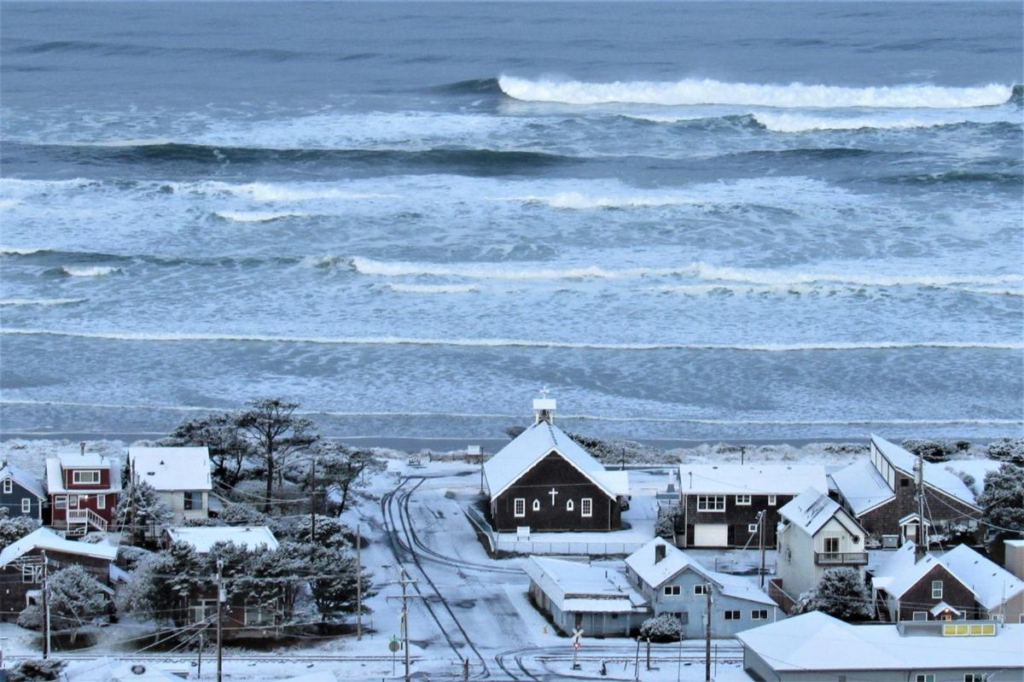
As we drove past Tillamook Bay we saw that the storm surge was already causing lowland flooding. The highway back to Portland, (state route 6) crosses the Coast Range by way of Wilson Summit. On the west side of the summit, all was rain, but as soon as we crossed the summit, it all turned to ice. The ice covered roadway was slick as the rain continued to fall and freeze on the roadway.
We were able to drive about 35 MPH until we reached US Route 26 where the Oregon Department of Highways was sanding route 26. We were able to drive at about 50 MPH, but as soon as we reached the outskirts of the metro area there was no sanding of highways as the maintenance of the urban streets fell to the surrounding urban communities.
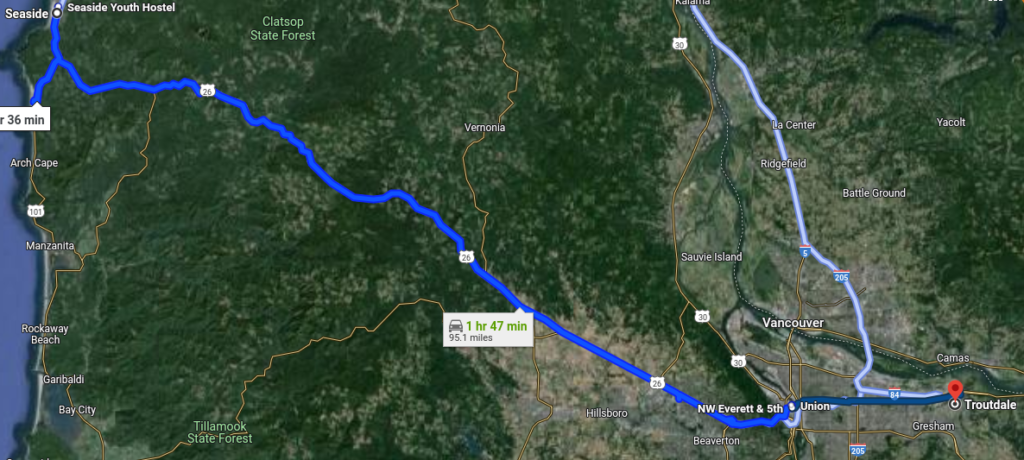
Highway 26 is called the Sunset Highway in the Portland metro area. As we approached the Portland Zoo, the large trees that are part of the park, due to the freezing rain, large limbs were breaking off and falling on the roadway. Auto traffic was at a crawl, dodging fallen limbs and stalled autos contributed to the overall confusion, plus the limbs sounded like breaking glass due to the heavy coating of ice. We slowly navigated our way down to Interstate 5, crossing the Willamette River on the high bridge that thankfully was sanded. We made the interchange to East bound Interstate 84 and slowly made our way to the town of Troutdale located east of Portland, a distance of about 15 miles.
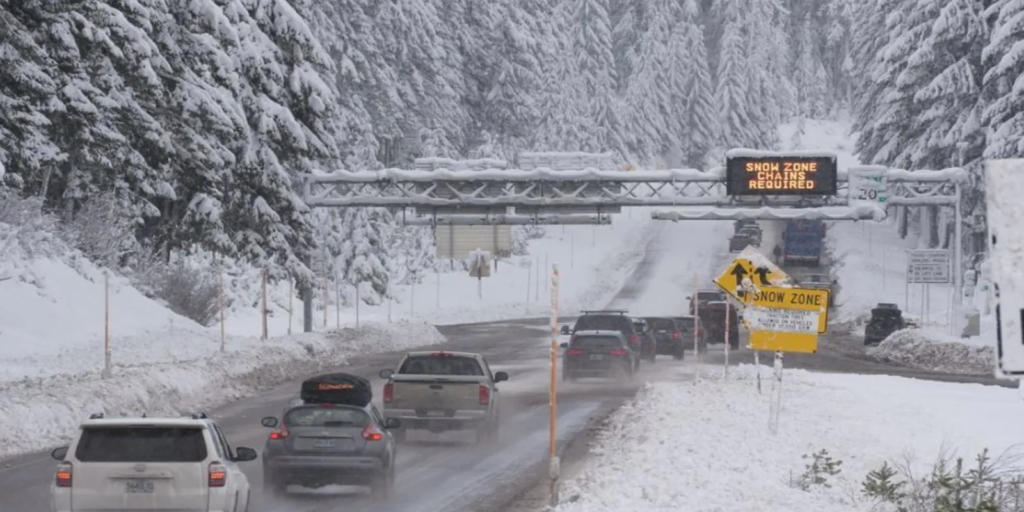
When we arrived in Troutdale, we found the eastbound Interstate 84 was closed. It was afternoon and the Oregon State Police stated they were planning to open the eastbound route the following morning. Accordingly, we took a motel room, purchased a set of chains, had some dinner and went back to the motel to await the opening of Interstate 84 eastbound.
The following morning, I installed the chains and lined up behind a semi to wait for the opening. As soon as the roadway opened, (about ten after eight AM) we pulled on the roadway and started east. As we were listening to a radio station, the State Police reported that due to severe icing in the gorge, they were going to reclose the highway. We were about 5 miles down the road and had no way of turning around and the semi in front of us continued so we decided to just follow him.

As we approached Bonneville Dam where the hills come down to the Columbia River we began to see small ice flows (about 3-4 inches deep) onto the roadway, but the semi we were following was leaving ruts in the flows allowing us to continue. The flows grew heavier and just past the little town of Cascade Locks where the Pacific Crest Trail crosses the interstate, we began to encounter flows that were deepening to six to eight inches deep. It was then that a large flow came off the steep hills and began to increase in depth to over a foot deep. Had it not been for the semi in front of us, we would have been stalled.
A particularly large flow began to push the car sideways and force us towards the center divider. To this very day I do not know how I managed to keep the car moving, but I stayed in the ruts cut by the semi to the best of my ability and thankfully the Lord allowed us to proceed. The heavy flow, that I can only characterize as an ice avalanche, continued for a distance of about a half mile or more. Praying and driving like a mad man, we kept going, finally exiting the bad part with more of the small flows for another couple of miles. The flows began to stop entering the road as soon as we passed the hills that crowd down to the Columbia River.
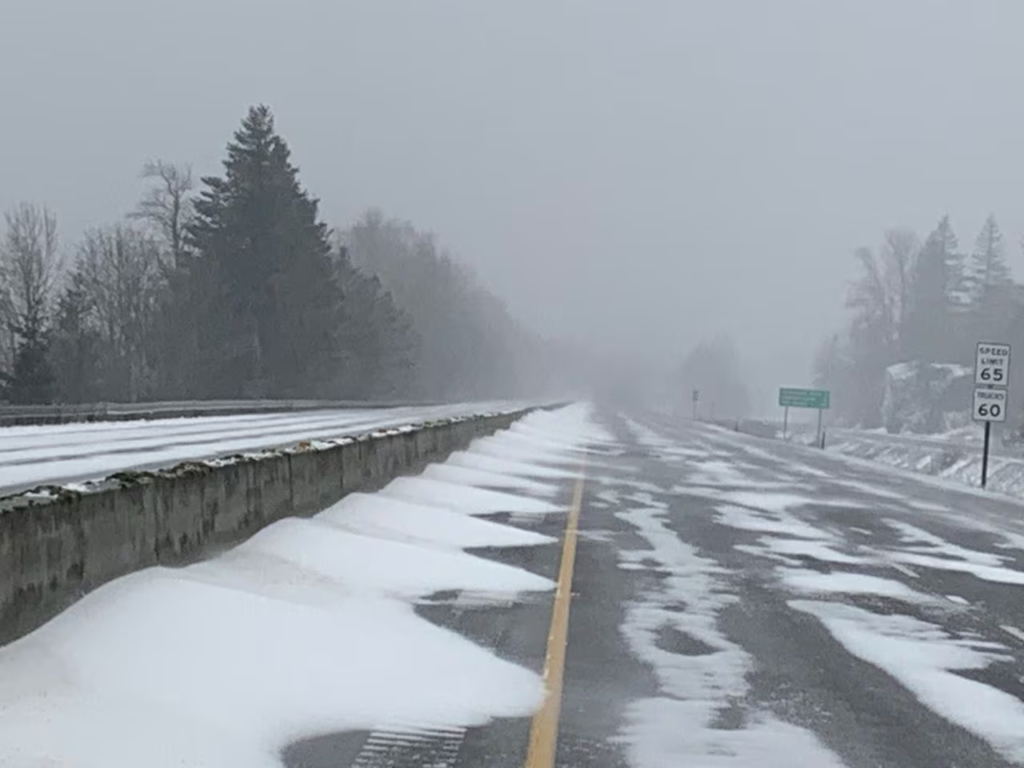
After that, the rest of the trip home was anticlimactic, but it took us the better part of 5 hours to drive the 75 miles from Troutdale, Oregon to The Dalles, Oregon; a drive that is usually just a bit over an hour. Just past The Dalles, we were able to remove the chains and continue home, arriving just as it was getting dark, (about 4:30) PM.
Walt 2024